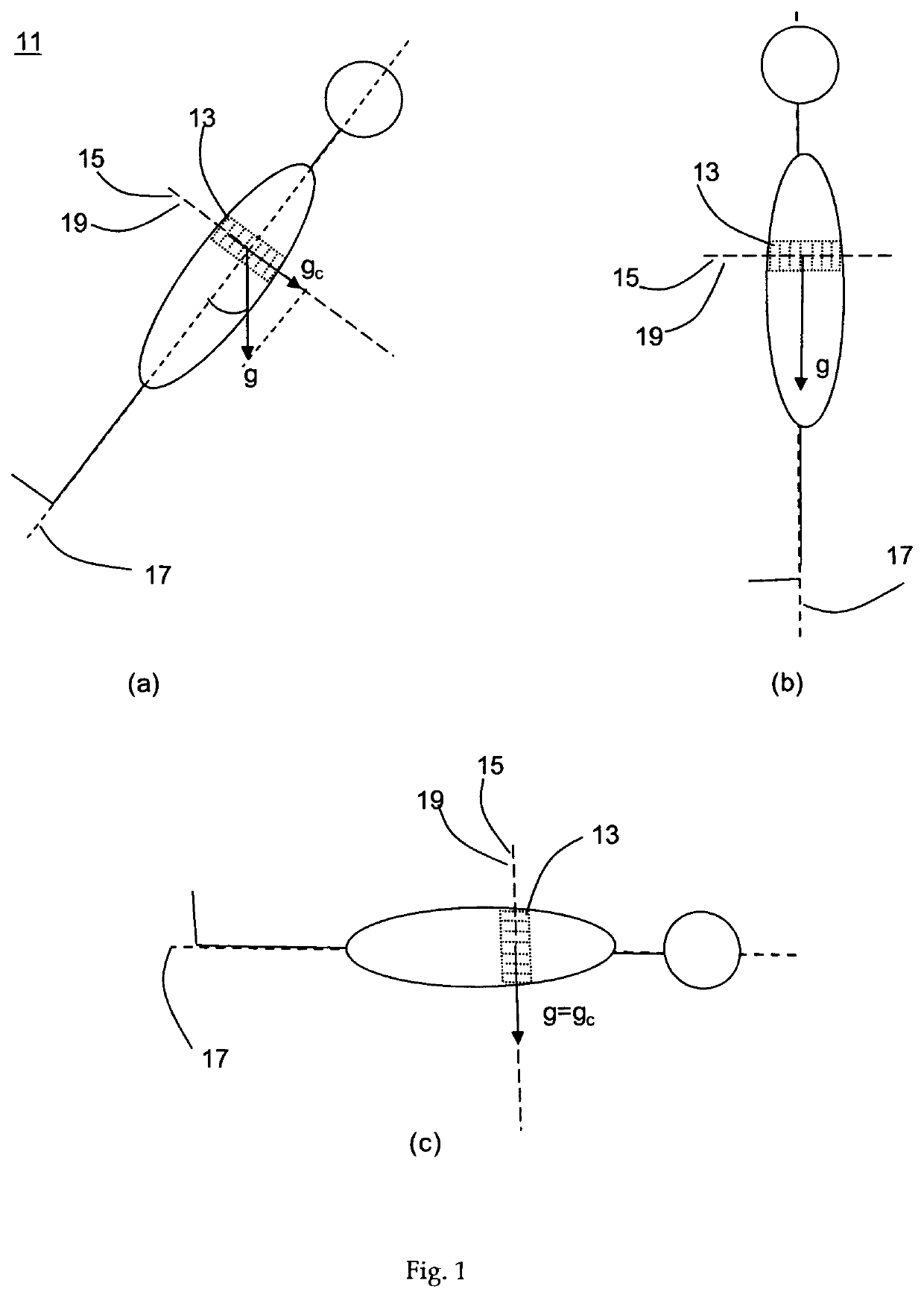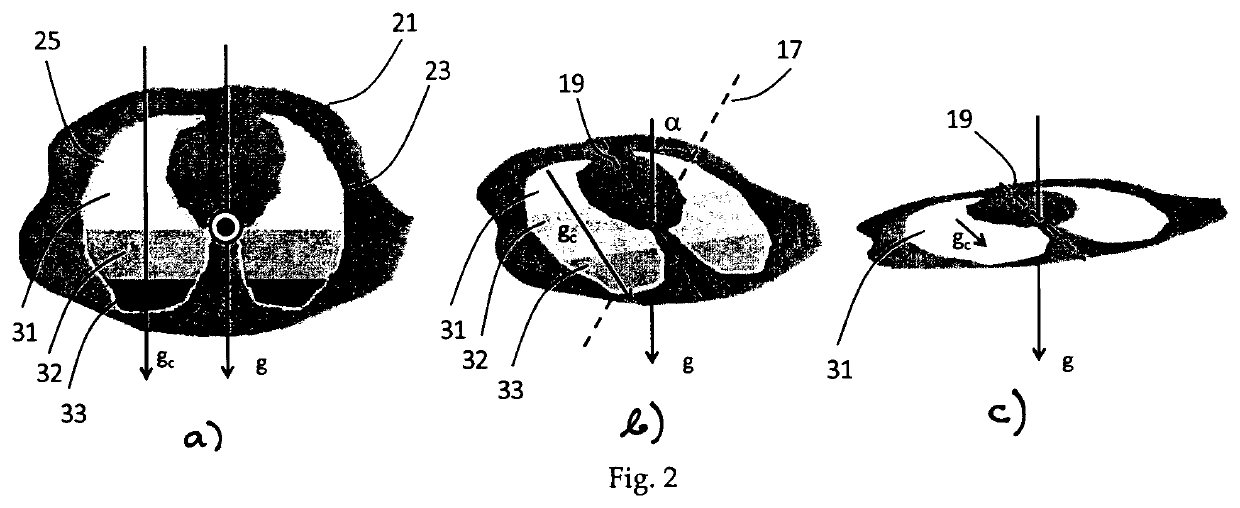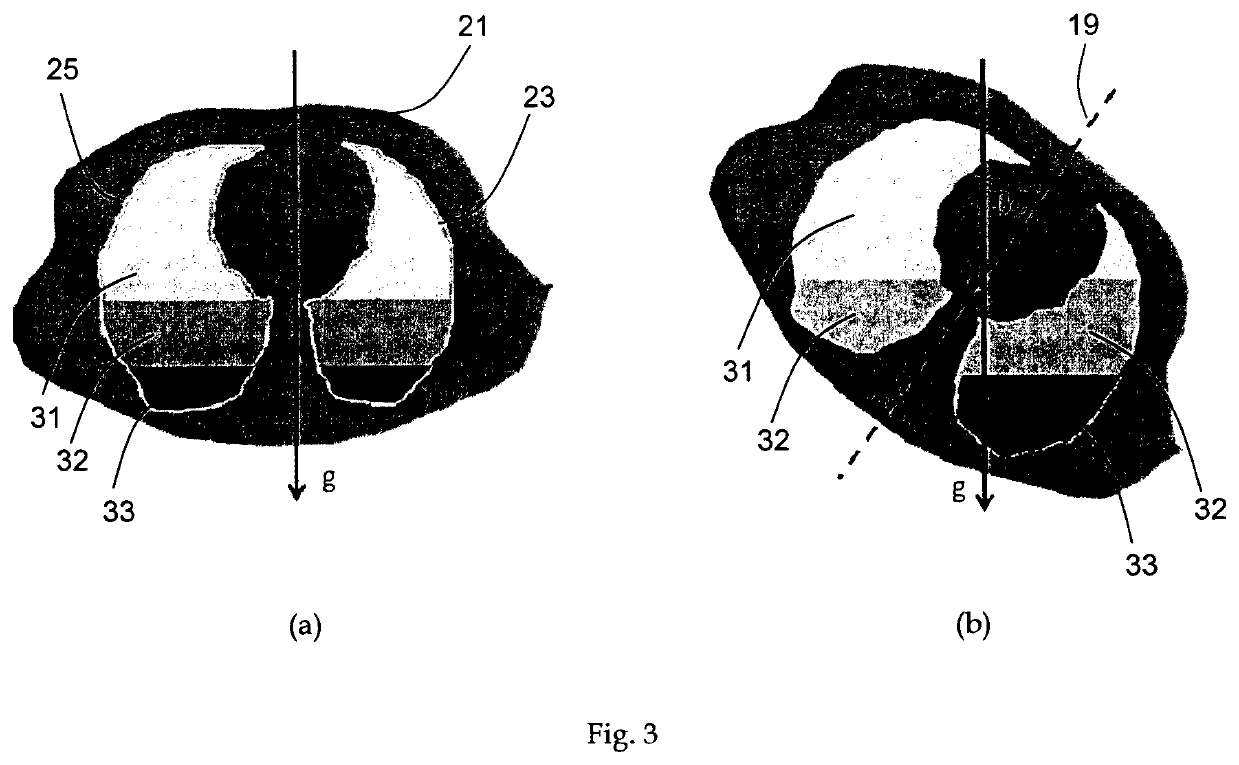Sensor device for electrical impedance tomography imaging, electrical impedance tomography imaging instrument and electrical impedance tomography method
a technology of electrical impedance tomography and sensor device, which is applied in the field of sensor device for electrical impedance tomography, electrical impedance tomography imaging instrument and electrical impedance tomography method, can solve the problems of too late and entail risks in lung recruitment manoeuvres, and achieve the effects of monitoring lung function, improving reference images, and improving utility and usability of eit technology
- Summary
- Abstract
- Description
- Claims
- Application Information
AI Technical Summary
Benefits of technology
Problems solved by technology
Method used
Image
Examples
example
[0087]Below is depicted an example for reconstructing an EIT image by using the finite element method and adjusting raw EIT data with respect to position and orientation of the patient according to present invention.
[0088]The reconstruction problem is solved using the finite-element method (FEM). The FEM uses a mesh of triangular elements, defined by nodes, to discretize the space or surface of interest. Then the physics of the problem is applied to the mesh and the problem is solved using given boundary conditions.
[0089]Doing this for EIT, one gets
Y(σ)*V=C,
[0090]where Y is the conductance matrix, depending on the conductivity σ, V is a set of voltage distribution and C is a set of applied currents.
[0091]Given that one can only measure the voltage at the medium's boundary at given locations (i.e. at the electrodes) the operator D is introduced. It returns a vector v of voltage measurements corresponding to a given system and scanning pattern,
v=D(V)=D(Y−1*C).
[0092]The above equation...
PUM
 Login to View More
Login to View More Abstract
Description
Claims
Application Information
 Login to View More
Login to View More - R&D
- Intellectual Property
- Life Sciences
- Materials
- Tech Scout
- Unparalleled Data Quality
- Higher Quality Content
- 60% Fewer Hallucinations
Browse by: Latest US Patents, China's latest patents, Technical Efficacy Thesaurus, Application Domain, Technology Topic, Popular Technical Reports.
© 2025 PatSnap. All rights reserved.Legal|Privacy policy|Modern Slavery Act Transparency Statement|Sitemap|About US| Contact US: help@patsnap.com



